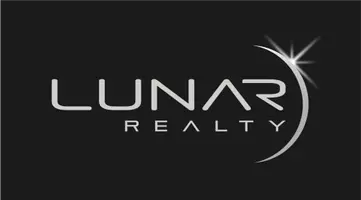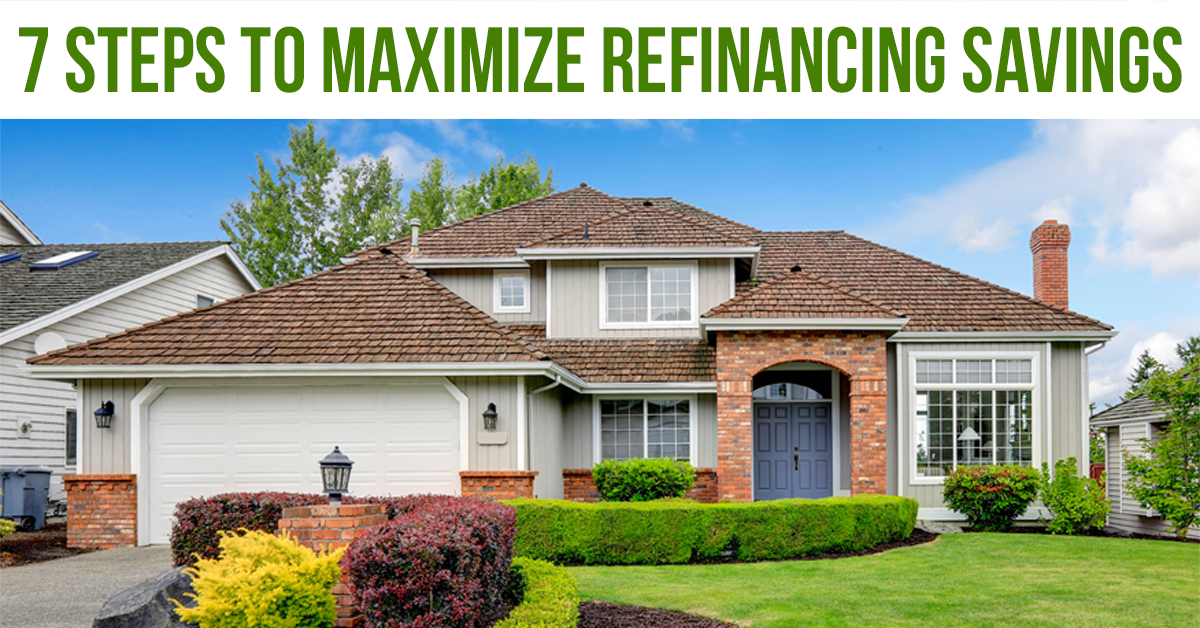Up-and-Coming Kitchen Trends
Up-and-Coming Kitchen Trends
The kitchen is one of the most important rooms in a house, and your kitchen’s design can say a lot about you and the rest of your house. If you’re looking for an update, here are a few up-and-coming trends for the design of your kitchen.
Dark Floors
If your walls or cabinets in your kitchen are on the lighter side, opting for dark floors will give the room a fantastic look.
Black Appliances
While stainless steel is a classic look, many appliance manufacturers now offer black as a color option and could look good as a contrast to white tile or granite countertops in many kitchens.
Quartz > Granite
This is a trend that already has some steam behind it, but could continue in the coming years. More and more people are choosing quartz countertops over granite in their kitchens, partially because it’s easier to maintain than granite since it doesn’t have to be sealed every year.
LED lights
A newer trend is putting LED lights along, under, and on top of cabinets. You can buy LED lights that change colors or ones that glow in the dark. LED also lights have also become popular for their energy efficiency.
Pecky Cypress
Wood with a grainy texture, Pecky Cypress looks great on kitchen islands and cabinets and gives your home a beach house vibe.
Refinancing Your Home
7 Steps to Maximize Mortgage Refinancing Savings
When the time is right to refinance your mortgage, you’ll probably want to make it as painless as possible. It’s a natural inclination to simply contact your current mortgage holder and take them up on one of the many offers they may have made to you through emails and direct-mail promotions. However, to realize maximum savings and make the whole process worthwhile, here are seven important items to put on the to-do list.
1. Know what you owe
Before you trigger a refi, review the balance and terms of your current mortgage. This will help you determine how much you’re likely to save when you take into account prevailing refinance rates, the payoff with your current lender and the fees and closing costs you’ll encounter.
You can also get a good idea of your best possible savings scenario, as well as the minimum acceptable loan terms you’ll want to negotiate.
Compare mortgage rates now
2. Check your credit score
If your creditworthiness has improved significantly since you took out your existing mortgage, you could be in for a pleasant surprise. A higher credit score can earn you a lower mortgage rate.
Review your credit history for accuracy by getting a free report from AnnualCreditReport.com, the official website set up under the federal law that guarantees free reports for consumers. Then consider purchasing your current credit score from one of the three main credit bureaus. There are many variations of the popular FICO score; be sure to ask for the one most commonly used by mortgage lenders.
Many banks and credit card companies offer free credit scores to their customers. These can be helpful, but you may not be getting the score most relevant to a mortgage application. Research conducted by the Consumer Financial Protection Bureau found that different scoring models can change the credit-quality category for nearly one-quarter of consumers. (For example, from “good” to “average.”)
3. Put a freeze on new debt
If everything checks out OK with your credit history, lock in your qualifications by resisting the urge to make additional credit card purchases or open new credit accounts. If anything, hoard available cash and pay down any debt that you can. Protecting your credit score can be instrumental in maximizing your mortgage refinance savings.
4. Shop at least 3 lenders
Research shows that borrowers obtain the biggest savings by shopping at least three lenders. In a recent study, the CFPB found that 47% of consumers consider only one lender when seeking a mortgage, potentially missing out on thousands of dollars of savings by overlooking a home loan lender with a lower interest rate.
5. Refi away mortgage insurance
If you put less than 20% down on your original mortgage, you’re probably paying for mortgage insurance. That’s a fee that protects the lender in the event of borrower default.
By now, your home’s appreciation may have given you enough equity that further mortgage insurance premiums are unnecessary — but some lenders don’t have to automatically terminate mortgage insurance until the balance on your loan falls to 78% of the original purchase price of your home, or until the midpoint of your mortgage payoff, whichever comes first.
Refinancing away — or at least lowering — your mortgage insurance premiums can provide significant savings, particularly if your original home loan was backed by the Federal Housing Administration, or FHA.
6. Forget cash-out and extended-term refis
It’s a common temptation to take a cash-out refinance, which converts your equity to cash that you can spend. Maybe it’s even for worthy causes, like funding a college education or paying off high-interest credit cards.
The thing is, you’re raiding your home’s value — and that can be a slippery slope, especially if home values start heading south again. And you might decide you want to move in a few years, only to discover that your home equity has been eliminated by that previous spending.
Another possible pitfall: extending the payoff term of your home loan. Sure, it can lead to a lower monthly mortgage payment, but it will greatly increase the interest you’ll pay over the long(er) term.
Real savings come from paying off debt, not adding to or extending it.
7. Evaluate your mortgage strategy
Maybe your current home loan is an adjustable-rate mortgage, and you think interest rates are sure to rise. Or, you have a higher-rate fixed-term loan and believe that a lower-rate ARM is the way to go.
Depending on your circumstances, including short-term and long-term housing needs, it may be time to rethink your mortgage strategy. By taking a close look at various scenarios, you may find that a different type of mortgage better suits your needs and saves you a money.
All set? Prepare for the paperwork
With a firm savings strategy in mind, it’s time to start the application process. If it’s been a few years since you’ve tackled a home loan, prepare yourself for the paperwork. The days of “low doc” or “no doc” mortgages are over.
You’ll likely face more disclaimers and fine print than you’ve seen in a while. And you may encounter your share of LOEs — letters of explanation — requesting that you explain anything from your employment history to random bank deposits.
In the end, it’s likely to be well worth all the effort, as your savings grow with each refinanced mortgage payment.
This article originally appeared on NerdWallet.
Home Equity Explained
Home Equity Explained: What It Is and Why It Matters
It is often said that homeownership builds wealth. So, what is home equity, and how can it enhance your net worth?
What is home equity?
Building home equity is a bit like investing in a long-term instrument, like bonds. Your money is, for the most part, locked up and not spendable. There are some ways to tap it, but wealth is created over years as your share of “free and clear” ownership of the house increases.
Home equity, by definition, is the current market value of your home, minus what you owe. You’re looking for a positive number there. Any gain comes from:
Paying down the principal on your loan
An increase in market value over time
It seems simple enough, but it’s not guaranteed. Just ask any homeowner who went through the most recent housing bust. When a housing bubble bursts, home equity can be an elusive concept, especially in underperforming housing markets, or if considered over the short term.
As a rule, building home equity is a slow climb, at best. U.S. residential year-over-year home price appreciation averaged just 1.89% over the last 20 years, adjusted for inflation, according to CoreLogic, the Bureau of Labor Statistics, and the Urban Institute.
However, behind that average are some major year-over-year price swings during the same period, ranging from +12.6% to -18.1%, according to the Urban Institute. When it comes to short-term home appreciation, sometimes it’s more of a bungee jump than a climb. It’s a good thing your home’s value isn’t texted to you monthly.
Why is home equity important?
The gradually expanding value of a home is a financial resource that can gain momentum over time. Because mortgage payments reduce the debt as the asset itself gains worth, paying on a house has been called “a forced savings account.” This is unlike virtually every other type of asset purchased with a loan, such as vehicles, which lose value while you pay them off.
A growing number of U.S. homeowners are amassing “impressive stockpiles” of home equity wealth, according to Daren Blomquist, senior vice president at ATTOM Data Solutions, in a recently released study.
At the end of the second quarter of 2017, there were more than 14 million American properties considered “equity rich” — meaning the debt on the property was 50% or less of the home’s current market value.
That’s about 24% of all owner-occupied homes with a mortgage.
Home equity takes time to build
Another nutrient helping to grow home equity wealth is time. Homeowners who stay in their homes longer are more likely to accrue equity.
In the second quarter of 2017, people selling their homes had lived there an average of more than eight years. That was the longest ownership period since ATTOM began tracking homeownership tenure in 2000. Before the recession, people were staying in their homes an average of about four and a quarter years, ATTOM data show.
“That’s a paradigm shift — a more conservative approach to homeownership and building wealth through homeownership,” Blomquist tells NerdWallet.
The study found that over 45% of properties owned for more than 20 years were equity rich. However, that number seems remarkably low, considering the long period of ownership.
“Keep in mind these are the subset of owners who still have an outstanding mortgage,” Blomquist says. “Our data shows 40% of all homeowners who have owned more than 20 years own their properties free and clear, compared to 34% of all homeowners.”
Blomquist says it is also a testament to just how widespread the ripple effects from the housing crash of the last decade have been.
“Many of these homeowners of 20-plus years lost huge amounts of equity during the downturn as home values plummeted 30% nationwide and much more in some markets — a deep hole to dig out of even with the strong market recovery of the last five years,” he says.
Just 10% of homes owned for less than one year are considered equity rich, according to ATTOM.
How does a home equity loan work?
You don’t have to sell to tap the profit inside your home. Instead, you can borrow against that value with a home equity loan or line of credit. A loan will provide you a lump sum; a HELOC allows you to draw on the available balance as you wish.
While the establishment of home equity lines of credit is increasing — in fact, they’re at an eight-year high — there are now one-third fewer HELOC accounts than during the prior housing market peak, in 2005.
Blomquist believes there is a new, cautious attitude to tapping home equity among today’s homeowners. And such a conservative approach is yet one more important component to building wealth.
» MORE: The pros and cons of home equity lines of credit
Home equity is not a get-rich-quick scheme
Building home equity is definitely a long-term proposition. Blomquist says wise words from one of his relatives may state it best.
“My wife’s great-grandfather — who bought property in Southern California a long time ago — his advice was, ‘You take care of a piece of real estate for 20 years, it’ll take care of you forever.’”
The article Home Equity Explained: What It Is and Why It Matters originally appeared on NerdWallet.
Danelle McMaster
Phone:+1(605) 228-5494



